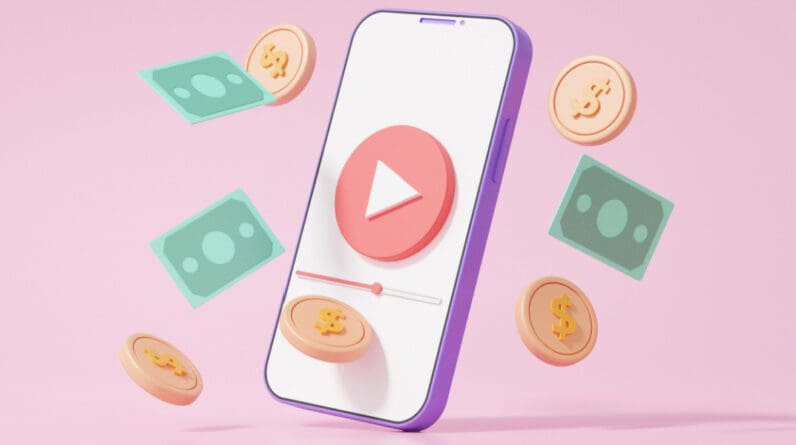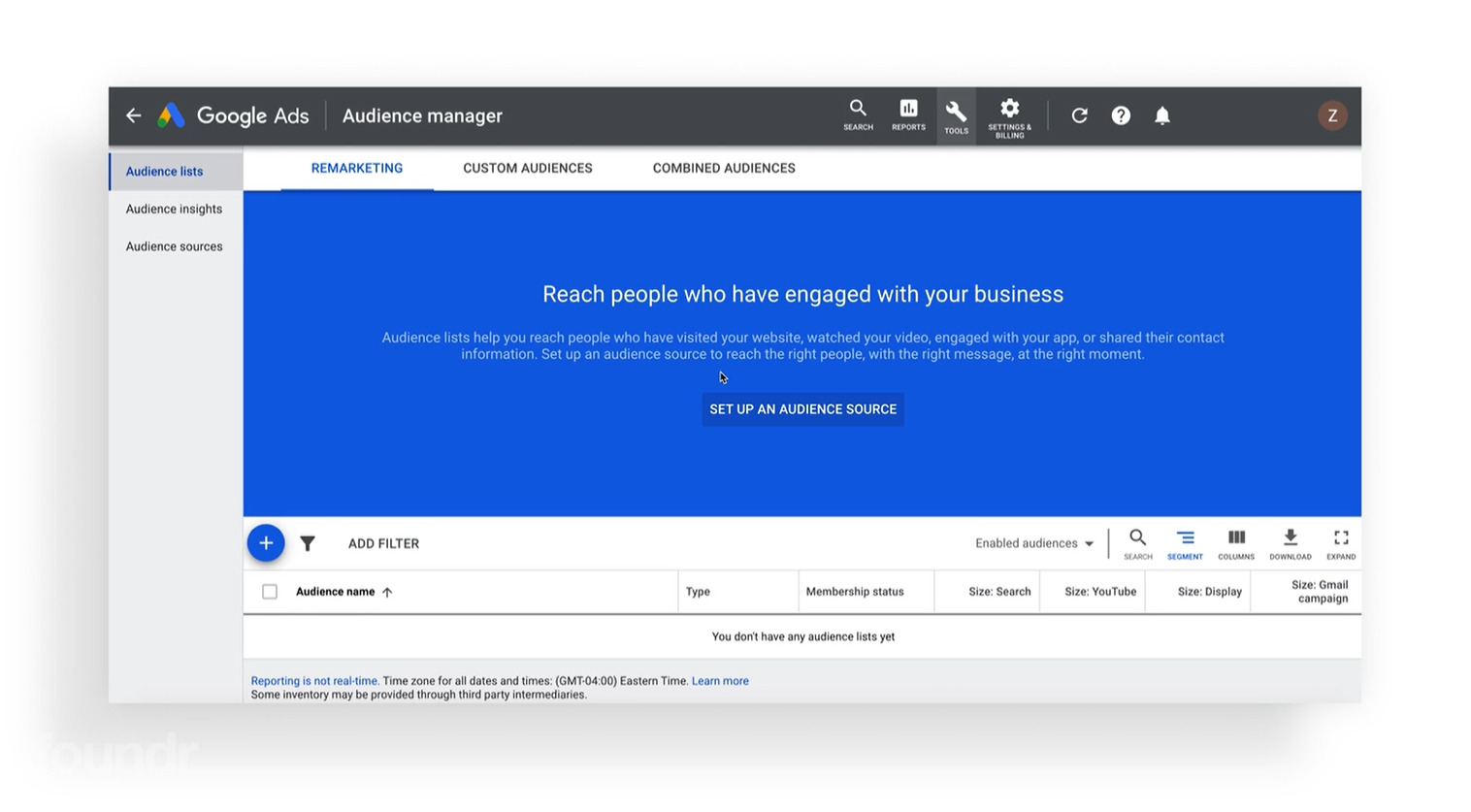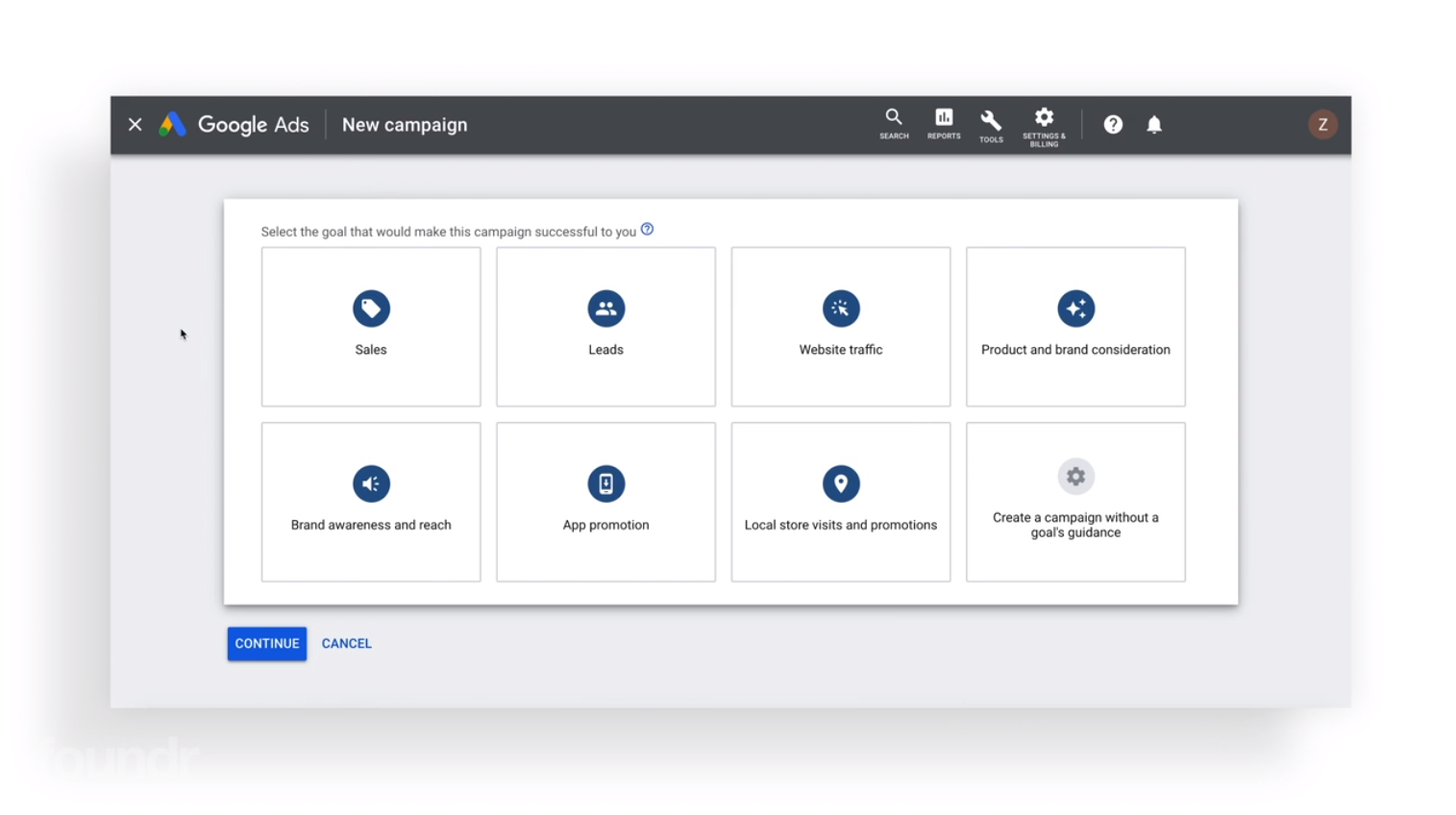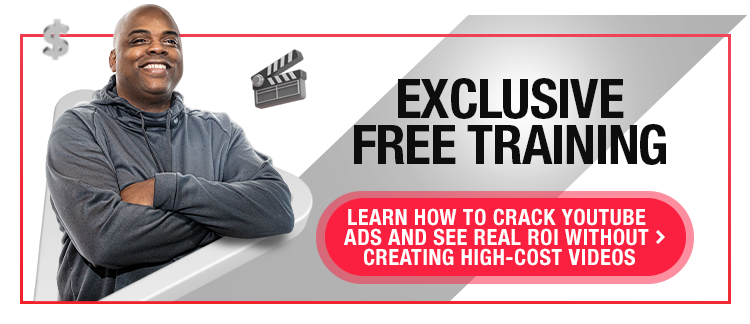
Why should you advertise your business on YouTube?
Well, are you ready for some mind-blowing numbers?
YouTube reports having over 2 billion monthly logged-in users across 80 languages in over 100 countries. YouTube is the second most popular social media network worldwide, coming in a close second behind Facebook.
There’s a staggering amount of people across the world logging in to YouTube every single day, so it’s no wonder that a 2022 study conducted by Social Media Examiner found that almost 67% of surveyed marketers said that they plan on increasing their use in YouTube.
Advertising your brand on YouTube can help you to build brand awareness, influence buyer decisions, boost sales, and increase brand loyalty. But the one thing that may have you hesitant about YouTube advertising is the cost.
How do you pay to advertise on YouTube? What is “bidding”? How much does it cost to advertise on YouTube? It’s enough to overwhelm anyone.
As always, Foundr’s got you covered with all the essential information you need to start advertising on YouTube.
Let’s start with the basics.
Table of Contents
How Does YouTube Advertising Work?
How Much Do YouTube Ads Cost?
The Key Factors Affecting the Cost of YouTube Ads
YouTube Ads Costs Pro Tips
YouTube Ads Cost FAQs
How Does YouTube Advertising Work?
YouTube’s biggest advantage is this: people use YouTube to search for information and entertainment. In other words, it has intent.
Not to mention, it’s owned by Google, making its analytics seamlessly intertwine with normal search intent!
When deciding on which ads to display, YouTube considers information like:
Google search history
Related videos the viewer has watched
Google Ad settings
Web history, age, location, and more, if someone is logged into their account
Using this information, YouTube pinpoints user intent and displays ads that align with the user’s interests. To advertise your brand, you pay YouTube to display your ad to the right person at the right time. This process is much more accurate than, say, television advertising, which cannot track metrics to the same degree as Google, or even close, for that matter.

How Much Do YouTube Ads Cost?
We get this question a lot. As with all advertising, it’s very difficult to put an exact figure on how much it will cost.
Influencer Marketing Hub estimates that YouTube ads can cost anything between $0.10-$0.30 per view, with a $2,000 average cost to reach 100,000 viewers. A view is counted when a viewer watches 30 seconds of your video or interacts with it by clicking on it. If your video is shorter than 30 seconds, a view is counted if a viewer watches the entire video.
The exact cost for running a YouTube ad campaign is influenced by these factors:
Targeting
Bidding
Ad formats
When advertising on YouTube, your main focus should not only be on how much YouTube Ads cost but also on what you are gaining from your spending. This means that you’ll need to constantly assess and reassess your campaigns to make sure that you’re hitting your goals with YouTube ads and ROAS.
What Is ROAS?
Return on ad spend (ROAS) is a metric that tells you the effectiveness and performance of your ad campaign. By calculating your ROAS, you can see which ad strategies are working well and apply those techniques to your other campaigns.
A simple formula to calculate your ROAS is: ROAS = Revenue / Cost
For example, if you are spending $1000 a week on YouTube ads and generating $1500 a week in sales from the ads: $1500/$1000=$1.5 ROAS
A good ROAS depends on a few factors, but according to WebFX, most companies aim for a 4:1 ratio—$4 in revenue to $1 in ad costs. The average ROAS, however, is 2:1—$2 in revenue to $1 in ad costs.
Keep Learning: 3 Ways to Create YouTube Ads Without Emptying Your Wallet
The Key Factors Affecting the Cost of YouTube Ads
1. Targeting

YouTube’s power lies in its ability to target your ideal audience at exactly the right time in the right location.
Video ads that are run on YouTube also trickle across the web through Google Ads. By setting up your ads and campaigns with the right targets, your ad is presented to someone who has been estimated as a potential lead based on their interests or activity.
You have a wide variety of targeting methods that you can use to reach specific audiences or niches based on where they are in the world, what they are interested in, and their choice of content. You can also run multiple campaigns with different target audiences to test engagement.
The cost to advertise on YouTube is heavily dependent on which audience you are targeting. Some audiences are more expensive than others to market to, so you need to choose wisely to avoid burning through your budget. As already mentioned, YouTube is owned by Google, ensuring that your targeting opportunities are the best in the business.
2. Bidding
The amount you’ll spend on YouTube ads all comes down to how much you want to bid for ad placement. YouTube placements work through a bidding system. The advertising cost depends on how many other people are bidding for the same ad placement. Before you set up your bidding options, make sure that your targeting is in place, as it will dictate your costs.
Generally, you’ll be bidding on cost-per-view (CPV) or cost-per-1,000 impressions (CPM). You’ll only be charged if someone watches the ad for longer than 30 seconds or interacts with your ad, whichever comes first. If your ad is shorter than 30 seconds and the viewer watches the entire thing, that also counts as a view.
With certain ad formats, you can choose to do pay-per-click (PPC). With PPC, it doesn’t matter how many people see your ad, you’ll only pay for the people who actually click on it.
Setting A Budget
Set yourself a daily budget on how much you want to spend on advertising, and then wait to see if you need to increase or decrease the amount. Some small businesses budget between $5-$10 per day, while others use a weekly budget of 50x their average order value (AOV).
As this is your first time advertising on YouTube, we recommend starting off with a more cautious approach as you test and learn what works best for your audience.
The best part about bidding is that you have the option to set a maximum amount you’re willing to spend per day. This ensures that you don’t suddenly wake up to an empty bank account because more people interacted with your ad than you thought possible.
Much like in the school playground, there’s no point in paying for people to come hang out with you if it will make you bankrupt.
Setting Up Your Bids
When you’re ready to set up your campaign, you’ll be asked to bid a Max Cost Per View. YouTube will then show you a variety of bids that will range in cost depending on how much you’ve tailored your targeting.
If you want to target one particular ad format, filter using the “Customize Bids Per Format” option. YouTube will give you an estimated number of views per day depending on your preferences. Make sure that the predictions align with your campaign goals and adjust accordingly.
For the first few days in particular, it’s important to track the performance of your bids to ensure everything is within budget but also that you are seeing a healthy number of conversions.
Optimizing Your Campaigns
The secret to optimizing your campaigns and getting the most out of YouTube Ads is to focus on adjusting and understanding your metrics.
The two metrics to focus on are your Click-Through Rates (CTR) and your View Rate. These two metrics will tell you if your campaign is engaging and if your budget is justified.
If your ad campaigns are not performing, it may be because a competitor has outbid you for the best advertising positions. Penny-pinching with your budget can negatively impact your ROI.
The only solutions are to bid higher than your competitor (if your budget allows for it) or to reassess the quality of your campaign.
Where possible, try to run A/B tests across all your campaigns, constantly testing things to learn and grow your performance on YouTube. Document each win so that future campaigns can start on the front foot.
3. Ad Formats

YouTube offers a range of ad formats that carry different price points and reach:
Skippable in-stream ads: the most common ad format, skippable ads are shown before, during, or after a video, and the viewer can choose to skip after 5 seconds
Non-skippable in-stream ads: these ads are typically 15-20 seconds in length and do not allow the viewer to skip
Video discovery ads: these ads appear as a suggestion in the search results in the right-hand sidebar or YouTube homepage
Display ads: these ads are embedded within the YouTube page, typically above the suggested videos column
Overlay ads: an image or text ad that covers 20% of the video at the bottom of the screen.
Bumper ads: non-skippable videos that are up to 6 seconds in length
Back-to-back ads: also known as ad pods is when there are two back-to-back ads before content starts
Outstream ads: outstream ads are mobile-only, so they will only appear on Google video partners and not on YouTube
Masthead ads: a digital billboard placed on YouTube’s homepage for 24 hours that is only available on a reservation basis through a Google sales representative
Each of these ad formats offers a different audience reach and a different user experience. It’s your job to decide which ad format will best suit your campaign goals. For example, if you’re looking to promote a huge 24-hour flash sale, can you budget for a masthead ad? Or if you’re just looking to build brand awareness, would a skippable ad be more effective than forcing viewers to sit through a 20-second video?
Ad formats are a delicate balancing act of budgeting and marketing. Test the waters until you’ve found the sweet spot.
YouTube Ads Costs Pro Tips
Finally, let’s take a look at some final YouTube Ad cost tips directly from our How To Master YouTube Ads course.
Tip #1: Conduct revenue-based tracking for maximum performance
By executing revenue-based tracking, you can make optimization decisions based on whether your efforts are generating revenue or not – specifically, generating MORE revenue than you’re spending.
To do this, here are the main two things to focus on:
Set up your ad account dashboards and modify your columns so that you can easily track your efforts based on value vs. cost.
Once you have this setup, regardless of where you’re looking in your account, you’ll be able to quickly see which campaigns are making money or not, compare them against your costs, and then optimize from there.
Tip #2: Consider cost-per-view campaigns
Cost-per-view campaigns, as opposed to conversion-based campaigns, allow you to target like we did before — using keywords and topics to better hone in on the audiences you want to reach.
Conversion campaigns are still important, but they need to be run in conjunction with cost-per-view campaigns to maximize potential.
Tip #3: Model your creatives after proven ads
Hey, imitation is the biggest form of flattery, right?
You can shortcut your success by modeling other people’s winning creative. You’re essentially “borrowing their data” and making something that can win as a YouTube ad concept — without spending a ton of time and money, and without guessing.
Here’s how:
Create a swipe file.
Find winning creatives that work so you can model them.
Transcribe them using a tool like Rev.
Model them using a video creative framework and ad script template (we provide these for free within the course).
Produce ads using that information.
Sometimes, it’s just a small concept, tactic, or technique, and not the entire creative message, that you can model for your own ad and find success.
Look at different niches and products outside of your own industry (not just competitors). See how you can borrow an idea that works in a different space and apply it to your own.
Keep Learning: Secrets To Running YouTube Ads Like A $30M+ Pro
YouTube Ads Cost FAQs
Who should I target with YouTube ads?
Sadly, there’s no get-rich scheme for YouTube ads (believe us, we’ve tried everything!) That’s why we suggest targeting your highest-spending customers and prospects first, who will keep buying more from you over time and are your most loyal target audience.
Will YouTube ads work for my small business or niche market?
There are over 2 billion active users on YouTube every single month. That’s pretty much all the people in the world that have internet access. This means YouTube Ads can work for just about anything. YouTube is also the second most-used search engine after Google itself.
Will my YouTube ads work with a small budget?
We all have to start somewhere. Obviously, you need to be able to invest in your business, but you can and should start small before going crazy, regardless of your financial position.
What should my YouTube ad budget be?
We suggest beginners start with $5-$20 per day to test the waters. More advanced levels will want to 30x your cost per acquisition per day. Eventually, you’ll want to scale to a healthy $1,000 per day YouTube ad spend.
Do I need professional equipment to make a YouTube ad?
Nope! All you need is your mobile phone to get started. YouTube is an intent-based platform. When you create an ad that speaks directly to the problem that your prospect is experiencing or a burning question that keeps them up at night and then provide a solution to that problem, there is a higher likelihood they will convert. No fancy cameras are necessary. There are also plenty of free design tools, such as Canva, which can help you along the way.
Ready to Start Rolling Out YouTube Ads?
Budgeting and paying for a new advertising avenue might seem complicated at first, but the beauty of YouTube is that you have the power to choose how much you’re willing to spend on it.
Assessing which ad format works best for you, customizing your targeting, and optimizing your campaign with bidding will give you an idea of how much it will cost to advertise on YouTube. And with over 2 billion monthly logged-in users, it seems like YouTube is the perfect playground for testing ads and getting your brand out there.
If you’re serious about crushing YouTube, check out our free YouTube ads course. It’s free and full of expert insight.
—
This article was updated with support from Graeme Whiles.








